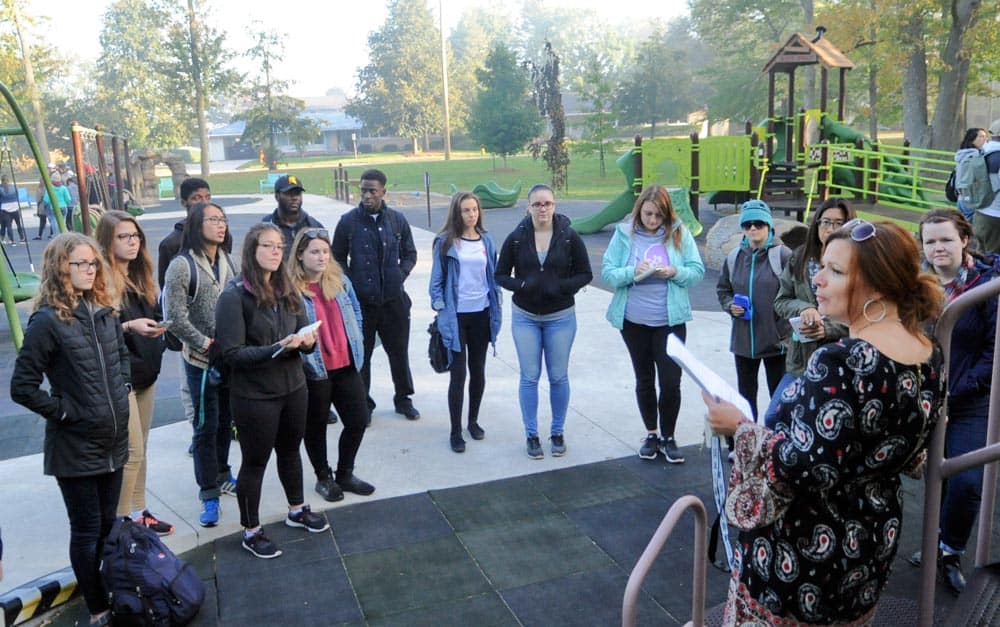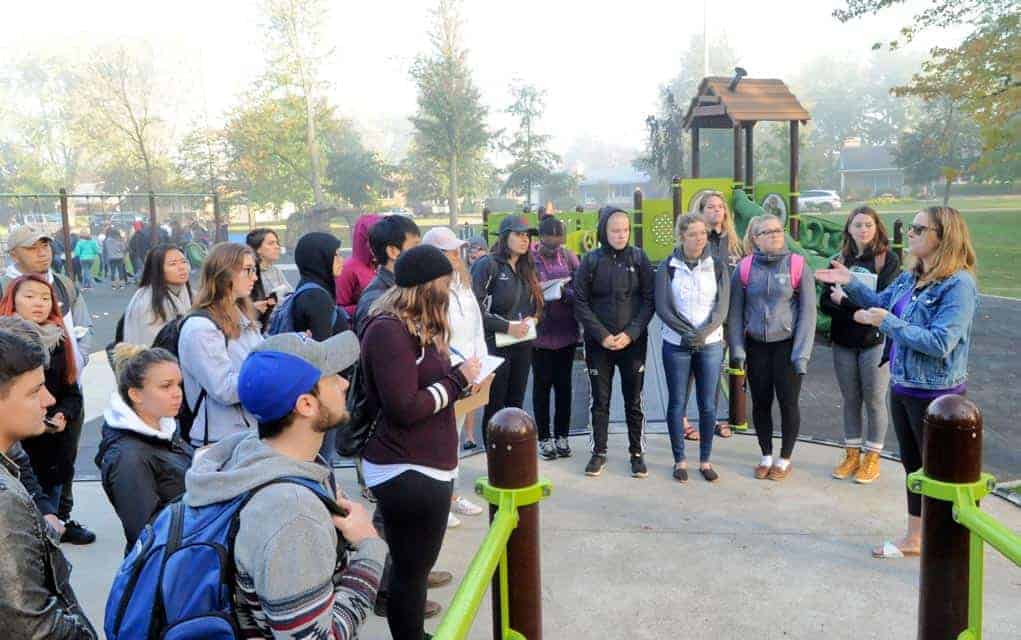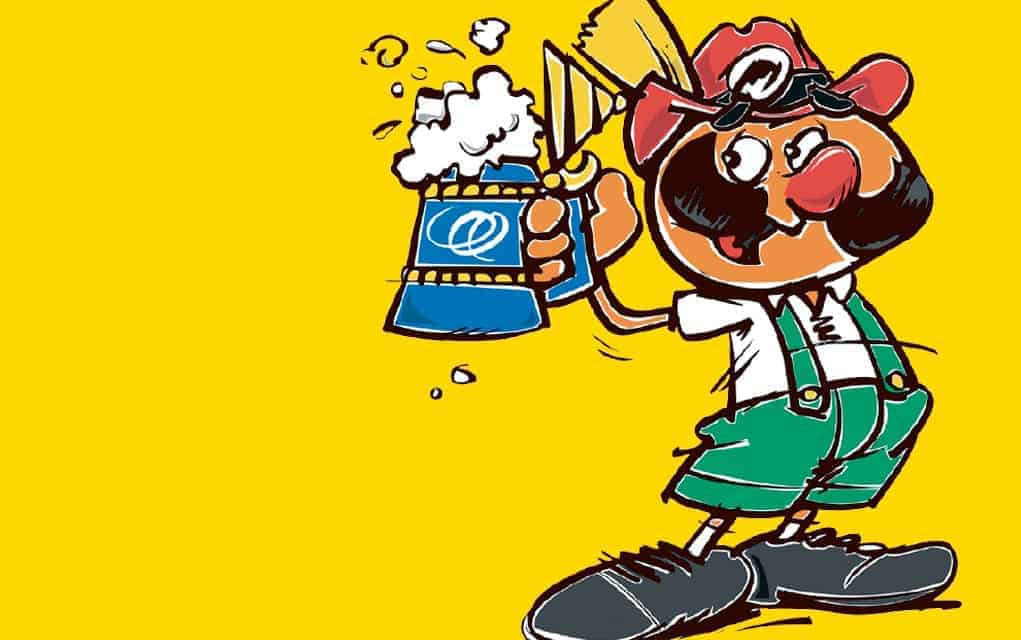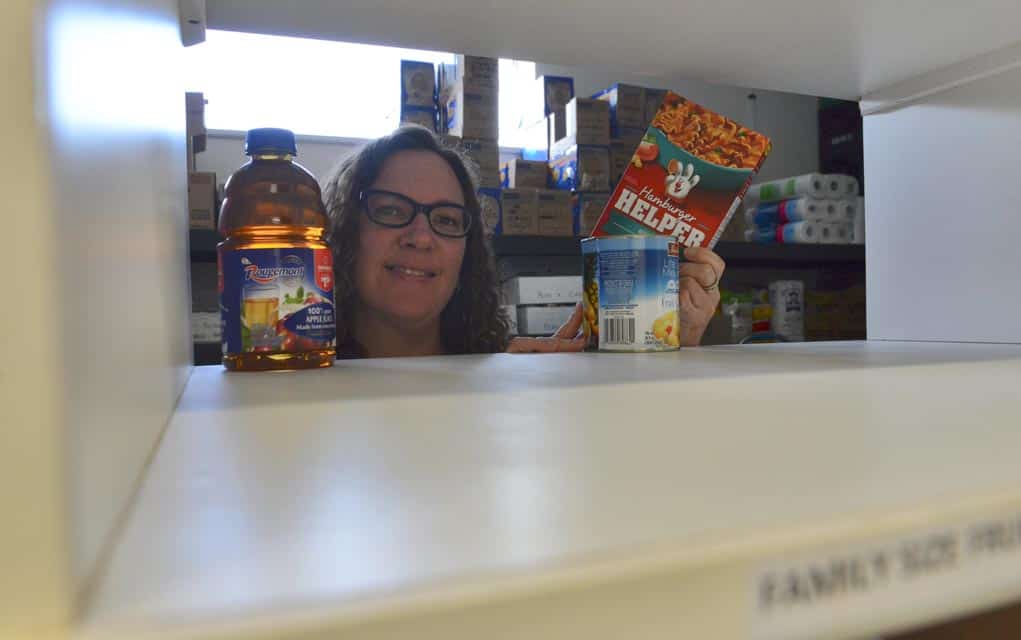The region’s townships can be proud of the parks, playgrounds and communal spaces that make smaller communities such an amiable place to live. So much so that the collective effort to develop such facilities are worthy of study.
From projects like the accessible park in St Clements and the newly opened Heidelberg Community Centre to the off-leash dog park in St Jacobs, there are plenty of examples of communities rallying to develop new recreational facilities. Taking notes, a group of University of Waterloo were in Elmira Tuesday morning for a firsthand look at the fruits of collective labour.
Katie Misener, professor of recreation and leisure studies at UW, led a field trip of some 80 of her third-year students eager to check out Elmira’s play areas and to meet those who helped create them. The goal was to show her students exactly how they can benefit their own communities, using the “cutting edge facilities” in the town as tangible examples.
“[Elmira] provides an educational opportunity for university students to learn about ‘how do these things happen?’ And, ‘what does it take to transform a community into an accessible space?’ That’s something our program is really big on, so that’s partly why I picked Elmira to do this field trip.”
The bus unloaded the class at Gibson Park first to check out the accessible Kate’s Place playground before heading over to the newly opened splash pad at Bolender Park. Meeting them there were three of the Woolwich individuals who helped bring these projects to life: Ann McArthur, Kelly Meissner and Shelly Martin.
“I wanted my students to be able to … really get a feel for what it means to improve the lives of others by meeting these leaders,” explained Misener.
“They’re so inspiring, and I just think it’s going to be great that my students can meet them and really see the space firsthand,” she added. “Because they are incredible parks and they are miles ahead of so many other communities in terms of accessible recreation.”
Ann McArthur is the director of recreation and facilities with the township, while Kelly Meissner is with Kate’s Kause, the not-for-profit that lead the charge on the playground at Gibson Park. Shelly Martin, meanwhile, was a key leader in the creation of the splash pad. She is also an alumna of the UW program, adds Misener, noting that Martin was a great example of what the students could do with their accumulated skills and education.

“I think knowing Shelly, who’s an alumna of our program, and Kelly, and knowing just how incredible these incredible citizen leaders are – and a big thread of this course is understanding citizen leadership and engaged citizenship, which just basically means people in our own community who work hard to make a difference for others,” said Misener.
“When I think about people who role model that, I immediately thought of these leaders in Elmira and the space they have built and the way that that has transformed recreation in our community.”
After listening to the three community leaders and asking their questions, the students have few minutes to play around with the equipment at Gibson Park, which they do with some alacrity, before heading over together to the Splash Pad.
There is a hands-on component to all this as well, besides swinging across the monkey bars of the gymnasium.
“They’re coming there to experience [the facilities] firsthand, and writing reflections that tie the [community development] theory to practice,” explained Misener. “But from there they’re actually doing an assignment that is called … ‘leveraging micro-funds’, where they’re going to do actual fundraising. Then it’s going to be directed back towards accessibility at the splash pad.”
The idea behind “leveraging micro-funds,” she says, is essentially that students will have to use a small amount of resources to fundraise larger amounts. And the money raised from their assignments will actually get put back towards an accessible feature of the Elmira splash pad itself.
Misener said she hopes she can motivate her students with the trip and with the assignment to how they can practice what they’ve learned to benefit their own communities.
“I think it’s good for them to have the experience of being part of something like this because then you never know where they’re going to take it. Where they might go in the communities that they land in. All over the country they will take this example from Elmira with them and, I hope, go on and do amazing things for their communities.”









